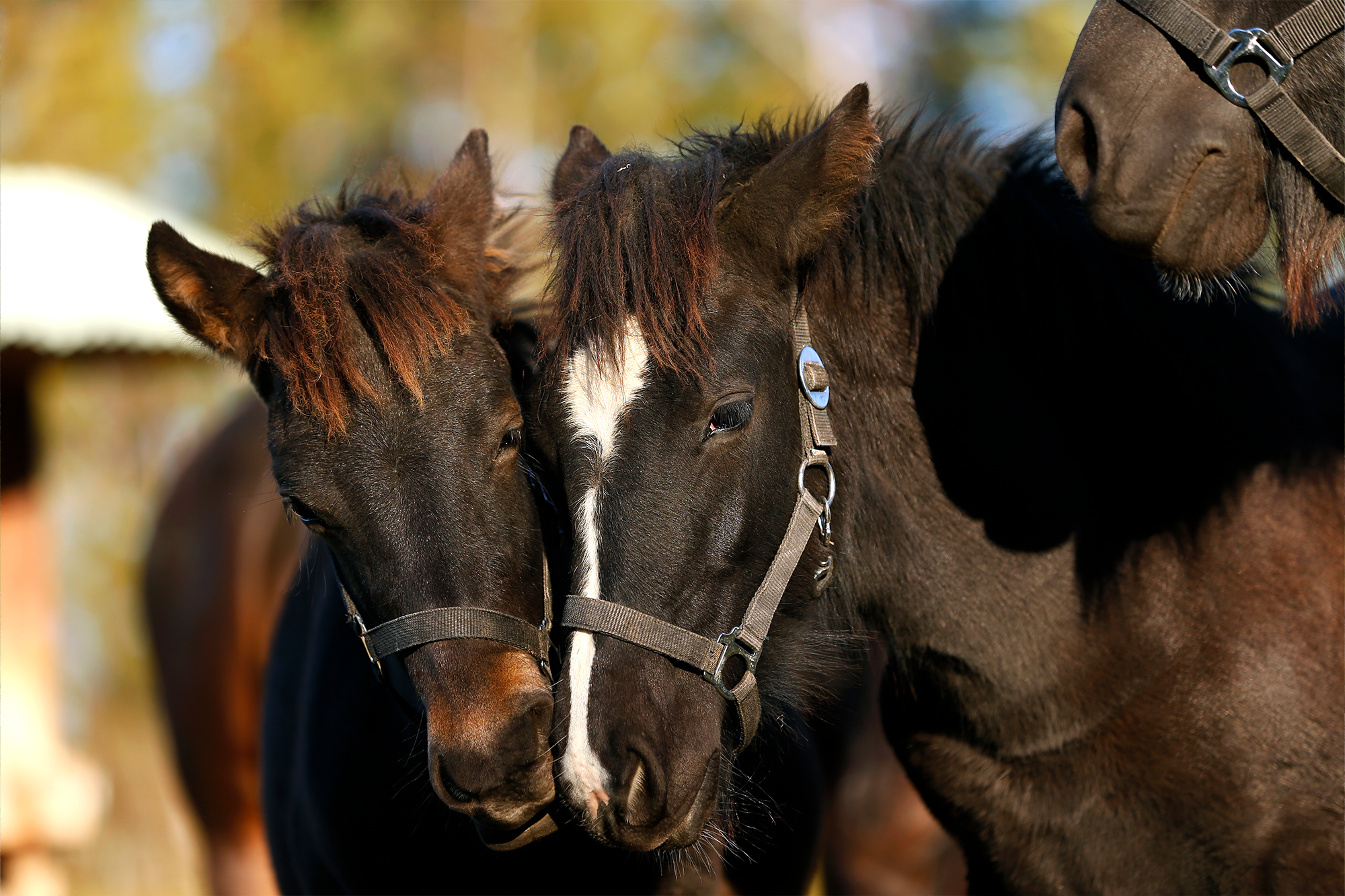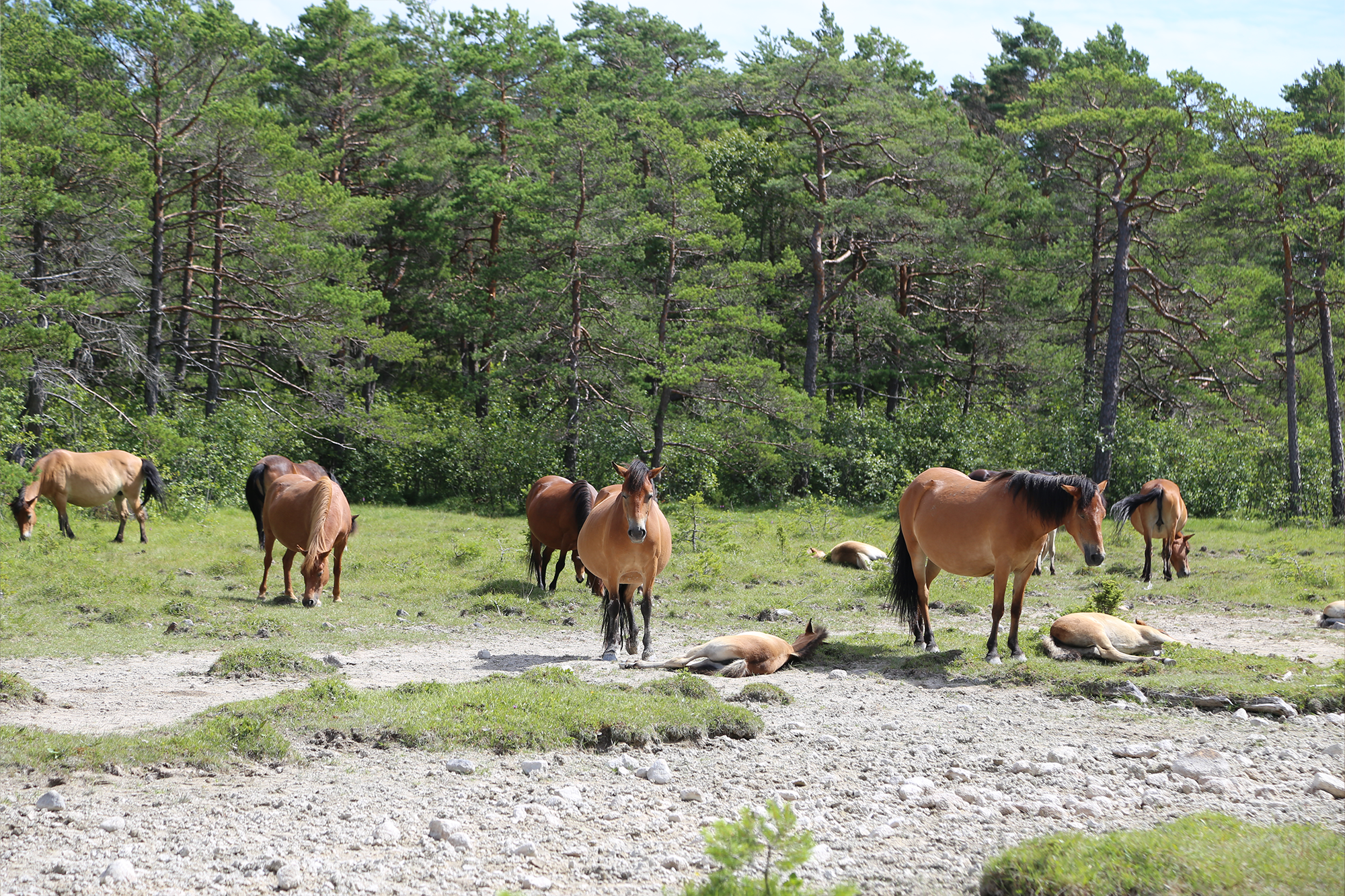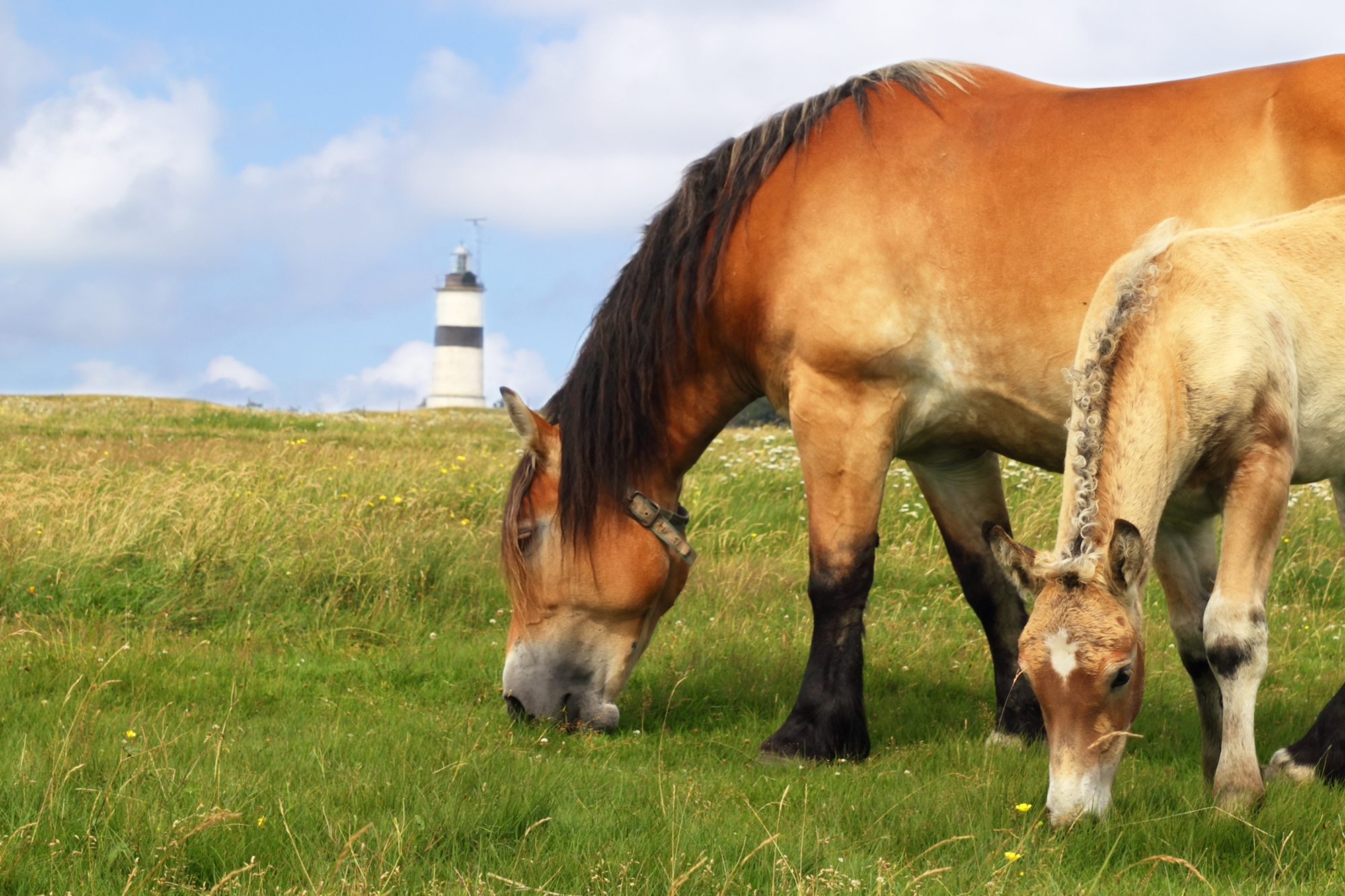


3.6. Sweden
Background
Horses have had important roles socially, culturally, and economically in Sweden. A changing society has shaped their use: they were first used for meat production, transportation and agriculture, competition and as a resource in the armed forces, and are now used for leisure and sporting events.
During the 20th century, the number of horses in Sweden drastically declined from 700,000 to 70,000. Fortunately, since the 1970, the number of horses in Sweden has grown vigorously. The growing horse sector has become an important part of the economy, and its positive development has made Sweden one of the most horse-dense countries in Europe, and even highest horse density in the Nordic countries with 488 893 horses reported in 2023.
The growth is also reflected by the number of breeders: presently more than 3500 breeders. The biggest increase has occurred in Swedish Warmblood (SWB) breeders with more than 300 new breeders, raising their share to over 37% (HNS Key figure report). Approximately 80% of Swedish horses are kept for hobby purposes and are generally not used for breeding activities. Besides this, most horse breeders have engaged in extensive horse breeding. Of all the breeds in Sweden, more intensive breeding is common in Standardbred trotter, SWB, Icelandic and Shetland pony breeds.
The human-animal relationship is important part of people’s well-being. It was reported in 2013 that about one million Swedes had some sort of regular horse activities. Horse riding is also Sweden’s biggest recreation and rehabilitation sport17. Based on SLU’s survey from 2013, horses has been in third place among young people’s sport hobbies, after football and indoor bandy.
Organisation and registration of horse breeding in Sweden
The Swedish Horse Industry Foundation (HNS) forms an umbrella for the equine sector and is financed by the Swedish Trotting Association and the Swedish Horseracing Authority through an agreement with the Swedish government. Horse keeping is regulated by the Swedish Board of Agriculture (Jordbruksverket). There are regulations for horses within branches such as animal health and welfare, training, competition, and prevention of doping. Legislation can also regulate the conditions under which horse keeping is practiced – indoors and outdoors.
Identification and registration of horses is regulated by law (Hästpassförordningen (EU) 2021/963). All horses must be registered and get a passport the year they are born (6 months at the latest). The passport must follow the horse throughout its life. HNS reported 19 official organizations and 15 breeding associations responsible for registering and issuing passports in 2020 (in report “Hästar och uppfödare in Sverige åren 2016-2020”). Breeding organizations are also responsible for pedigree recording for the studbook and breeding evaluation of their breeds. Further, transporting horses to Sweden requires registration, as do activities related to semen, ova, and embryos. The semen must come from semen collection stations approved for intra-EU trade.
Horses residing in Sweden for longer than 90 days must be registered in the central horse database. Furthermore, information from breeding associations and organizations that keep records is kept in a database that accessible for the Swedish Board of Agriculture. The database can be searched based on the horse’s universal equine life number (UELN) or chip number to see where the horse is registered.
Population statistics
After a dramatic decline, the number of horses in Sweden have increased significantly in the last 30 years. Jordbruksverket reported 355 000 horses in 2019 and 488 893 horses in Sweden in 2023. The Swedish University of Agricultural Sciences (SLU) reported that Sweden is now the second most horse-dense country in Europe (39 horses per 1000 inhabitant). The area with the highest horse-density within Sweden is Gotland, where there are 180 horses per 1000 inhabitants (SLU report 2013:29). Horse companies have an average of 4.7 horses. The total number of all four native breeds is 20 804 horses (HNS Nyckeltal för svensk hästuppfödning under åren 2016-2020). The conservation status of the native breeds can be found in the table (Table 5).
Sweden has reported only 9 horse breeds in the DAD-IS database. The international breeds are the Dartmoor pony, the English Thoroughbred, the Exmoor pony, the Norwegian Fjord horse, and the Shetland pony. The Gotland pony is classified as a regional breed, when in turn the Swedish Coldblooded trotter, North Swedish horse and Swedish Ardennes are classified as national breeds.
Breed | Type | Status | Trend |
Swedish Coldblooded trotter (Kallblodstravaren) | Coldblooded trotter | Endangered (breeding females 1380) | Decreasing |
North Swedish horse (Nordsvensk brukhäst) | Medium sized, coldblooded working horse | Endangered (breeding females 2500) | Stable |
Gotland pony (Gotlandsruss) | Pony | Endangered (2500 females, 250-300 foals annually) | Stable |
Swedish Ardennes (Svensk Ardenner) | Medium sized working horse | Endangered (breeding females 700) | Stable |
Table 5: Status of the four native breeds according to DAD-IS (2023).
Hästnärings Nationella stiftelsen (HNS) has reported key figures of horses and breeders for more than 10 years. There has been fluctuation in the statistics, but breeding has remained stable. Warm-blooded sport horses dominate numerically. These are used in trotting, galloping, equestrian dressage, jumping, eventing, endurance, driving, working equitation and vaulting. The Icelandic horse is Sweden’s fourth most popular horse breed. It is worth noting that the crossbred individuals were the third biggest group between 2001 and 2020.
The magnitude of horse breeding has remained quantitatively at the same level, with approximately 13 000 bred mares per year. The decline caused by the previous economic recession 2009-2013 is still visible, as buyers demand 6-10-year-old horses.
Breed statistics for the native breeds – data discrepancies DAD-IS reporting
The data derived from DAD-IS concerning the Swedish native breeds demonstrated peculiar patterns of population development (Figure 9). For example, for the Gotland pony, the data from DAD-IS suggest that the population has experienced fluctuations with two large declines (late 1990s and early 2000s) and three large jumps (early 1990s, late 1990s and around 2010) in their population (Figure 9A). The number of breeding mares also appear to have some large fluctuations between the early and late 1990s, showing a large jump from approximately 500 to 3000 breeding mares and then a drop from 3000 to approximately 500 breeding mares (Figure 10A). For the Swedish Coldblooded trotter, the numbers have been entered at only three different years for the population and two for the number of breeding mares, which makes it difficult to determine a sensible perspective of the population development. For both the North Swedish horse and the Swedish Ardennes, the population trend appears to follow the trend for number of breeding mares (Figure 9C,D and 10C,D), indicating that similar definitions for population number have been used for these breeds. Nevertheless, the reported data appear to be influenced by discrepancies for all the breeds. This could indicate registration errors for the native breeds and highlights the importance of collecting and reporting correct numbers using the same definitions for population data both within and between the horse breeds.
The overall trends demonstrated from the DAD-IS data do not correspond with the trends that have been expressed by breed associations. For instance, while the data for the breeding mares of the Gotland pony population is depicted as a stable since the 1980’s, except for one peculiar jump in number during the 1990’s, the breeding association for the Gotland pony reported that the number of foals born was declining in the 1900’s, and stable during the 1990’s. Similar discrepancies can be noted for both the North Swedish horse and the Swedish Coldblooded trotter. The number of foals born registered for the Swedish Coldblooded trotter is currently in decline, suggesting fewer breeding mares in the population, while the number of breeding North Swedish horse mares is currently stable. This is not illustrated by the data in DAD-IS, as the data indicated increasing trends for both of the breeds (Figure 10).
Figure 9A: The population number of the Gotland pony according to DAD-IS reporting between the late 1900’s and 2021.
Figure 9B: The population number of the Swedish Coldblooded trotter according to DAD-IS reporting between the late 1900’s and 2021.
Figure 9C: The population number of the North-Swedish horse to DAD-IS reporting between the late 1900’s and 2021.
Figure 9D: The population number of the Swedish Ardennes according to DAD-IS reporting between the late 1900’s and 2021.
Figure 10A: The number of breeding mares in the Gotland pony population according to DAD-IS reporting between the late 1900’s and 2021.
Figure 10B: The number of breeding mares in the Swedish Coldblooded trotter population according to DAD-IS reporting between the late 1900’s and 2021.
Figure 10C: The number of breeding mares in the North Swedish horse population according to DAD-IS reporting between the late 1900’s and 2021.
Figure 10D: The number of breeding mares in the Swedish Ardennes population according to DAD-IS reporting between the late 1900’s and 2021.
Commercial horse and breeding activities
During the last decades, the number of horses in Sweden has grown exponentially since the 1970s. The growth is also reflected by the number of breeders - presently more than 3500 breeders. The biggest increase has occurred in Swedish Warmblood (SWB) breeders with more than 300 new breeders, raising their share to over 37% (HNS Key Figure Report. 80% of Swedish horses are kept for hobby purposes. More extensive breeding is common in Standardbred trotter, Swedish Warmblood, Icelandic horse and Shetland pony breeds. The most popular breeds are commercial Warmblood, but the third largest category of foals born is classified as crossbreeds.
The use of artificial insemination or natural mating within a breed varies greatly, but AI is common with Swedish Warmblood and Standardbred trotters. Breeds such as the English Thoroughbred and certain pony and coldblooded breeds only use natural mating. In the breeding of Standardbred trotters, semen doses imported from abroad is commonly used in AI.
Among the Swedish Warmbloods, the use of stallions is divided into opposite extremes: ~33.3% of the stallions are used for 10 or more mares, whereas another 30% of stallions are only used for one mare annually. In most native breeds, though, use of stallions is more evenly distributed due to natural mating, but the stallion distribution is variable in the Coldblooded trotters.
Economy
The Swedish horse sector is a large and growing part of the economy. As previously stated, Sweden is one of the most horse-dense countries in Europe. Horses bring an additional source of income to agriculture and have served as one of the reasons why people move to the countryside. The COVID-19 pandemia increased interest in owning horses. Some horses are still used in agriculture and forestry, but most horses are owned for leisure. 20% of horses are used for commercial purposes (e.g., trotting and horseracing, riding schools, and boarding activities). The commercial horse sector has been regarded as a possible contributor to rural development by the Board of Agriculture in Sweden (Jordbruksverket).
Native breeds and conservation programs
There are four native breeds in Sweden: the Gotland pony (Gotlansdruss), the Swedish Coldblooded trotter (Kallblodstravare), North Swedish horse (Nordsvensk brukhäst) and Swedish Ardennes (Svensk Ardenner). Conservation of traditional landrace breeds in Sweden began in the 1970s. The Swedish Board of Agriculture (Jordbrukverket) has the overall responsibility for conserving the native horse breeds. In addition, Jordbrukverket has a Reference Group for animal genetic resources where representatives of all animal breeds that are listed as endangered are included. The conservation work is conducted in collaboration with breed associations, including the Swedish Russ Breeding Association (Svenska Russavelsföreningen), the Swedish Trotting Association (Svensk Travsport, ST), the Swedish Ardennes Horse Breeding Association, and the North Swedish horse Breeding Association (Föreningen Nordsvenska Brukshästen).
Based on the HNS key figure report for Swedish horse breeding (Nyckeltal för svensk hästuppfödning) there are 559 breeders responsible for the native horse breeds (217 for the Swedish Coldblooded trotter, 135 for the North Swedish horse; 111 for the Gotland pony; 96 for the Swedish Ardennes). In addition to four live native breeds, Sweden has reported two extinct horse breeds in DAD-IS database.
Gene banking activities
According to the DAD-IS database, freezing of semen has been done from the Gotland pony in the early 2010s from 6 stallions. Correspondingly, 127 doses were collected from North Swedish horse and 135 doses from five Ardennes stallions in 2019.
Subsidies
Subsidies for the endangered native horse breeds are provided per foal that is born.